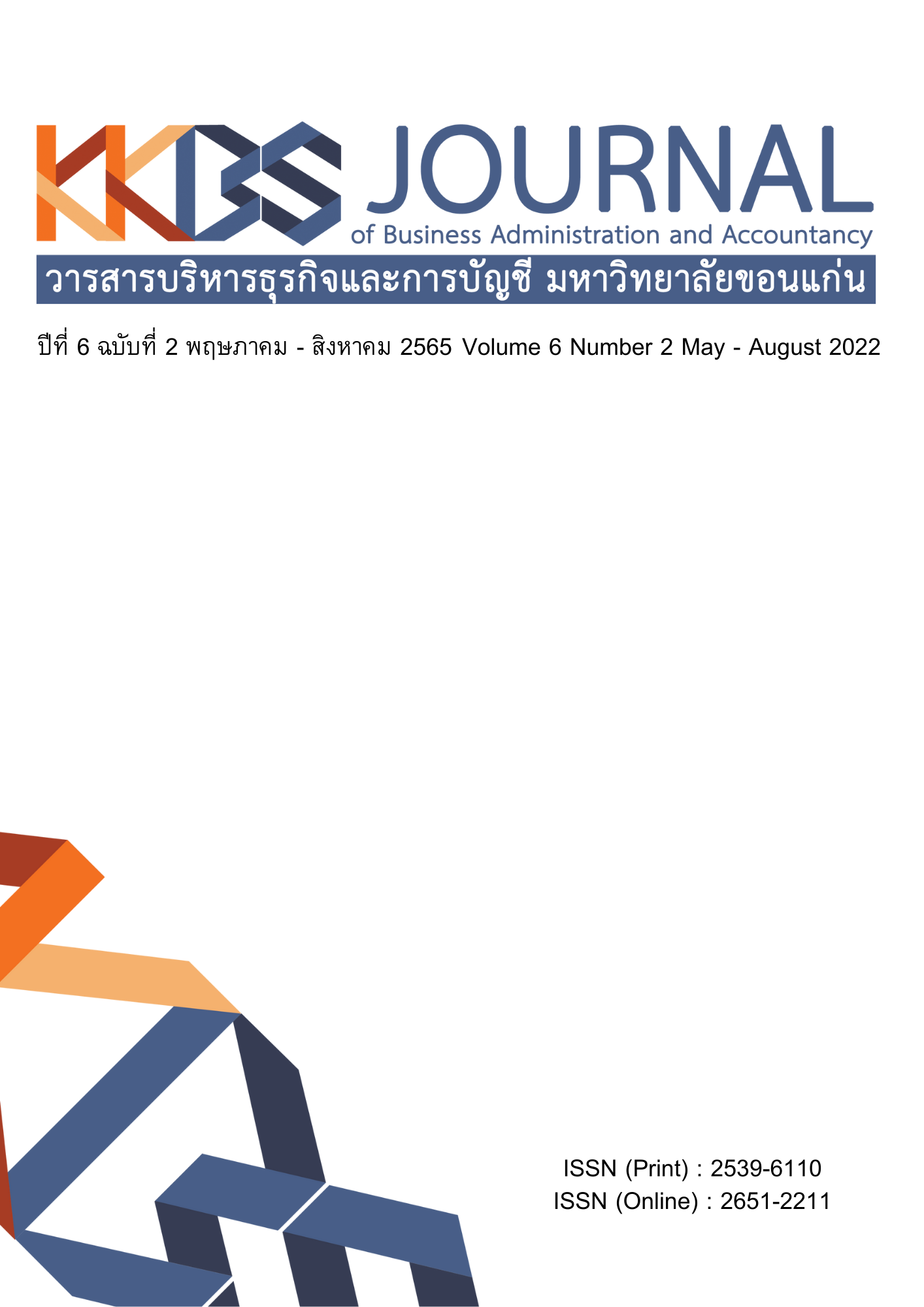Relationship between Fair Values and Stock Price of Listed Firms in The Stock Exchange of Thailand
Main Article Content
Abstract
The research aims to examine the relationship between fair values of investments in equity securities and stock price of listed firms in the Stock Exchange of Thailand. Totally, 174 firms were chosen as a sample of the study. Secondary data was gathered via SETSMART database. Descriptive statistics which were mean and standard deviation, and multiple regression analysis are employed for the data analysis. Independent variables consist of net income, cash flows from operating activities, fair value of investments in equity securities, level 1, level 2, and level 3 fair value of investments in equity securities. The dependent variable is stock price. The results show that net income, cash flows from operating activities, and fair value of investments in equity securities has positively related with stock price. In terms of fair value hierarchy, both of level 1 and level 2 fair value of investments in equity securities has positively related with stock price. Levels 3 fair value was not found
Article Details

This work is licensed under a Creative Commons Attribution-NonCommercial-NoDerivatives 4.0 International License.
The articles published in the journals are the authors' opinions, not the opinion of the editorial team or administrative staff. The articles published is copyright of the Journal of Business Administration and Accounting, Khon Kaen University.
References
Ayres, D.R. (2016). Fair value disclosures of level three assets and credit ratings. Journal of Accounting and Public Policy, 35(6), 636-653.
Bepari, M.K., Rahman, S.F. & Mollik, A.T. (2013). Value relevance of earnings and cash flows during the global financial crisis. Review of Accounting and Finance, 12(3), 226-251.
Buachoom, W & Donpad, S. (2018). Association of earnings and book value with stock price of financial firms in the Stock Exchange of Thailand.Journal of Accounting Profession, 14(44), 55-67. (In Thai)
Federation of Accounting Profession (2019). Thai Financial Reporting Standards 13 (Revised 2018) Fair Value Measurement. Retrieved 29 March 2020, form http://www.tfac.or.th/Article/Detail/94713 (In Thai)
Fiechter, P. & Meyer, C. (2009). Big bath accounting using fair value measurement discretion during the financial crisis. Zurich: University of Zurich.
Jing, L. & Kyu, S.P. (2010). The role of fair value accounting for investment in securities: Evidences from the Chinese Stock Exchanged Market. iBusiness, 2(4), 409-414.
Junsangeam, D. & Srijunpetch, S. (2015). The effect of fair value hierarchy disclosure from different performance on nonprofessional investors’ judgments. Journal of Accounting Profession, 11(31), 80-90. (In Thai)
Kisseleva, K. & Lorenz, D. (2016). Are level 3 fair values reflected in firm value? Evidence from European banks. Berlin: ESMT European School of Management and Technology.
Landsman, W.R. (2012). Is fair value accounting information relevant and reliable? Evidence from capital market research. Accounting and Business Research, 37(1), 19-30.
Ochi, N. (2017). Limits of level 3 fair value measurement: Based on conceptual framework. Journal of Modern Accounting and Auditing, 13(12), 493-507.
Phennipa P. & Nongnit C. (2017). Cash flow, stock returns and the performance of the listed companies on the market for alternative investment (MAI). KKBS Journal of Business Administration and Accountancy, 1(3), 35-50. (In Thai)
Song, C.J., Thomas, W.B. & Yi, H. (2010). Value relevance of FAS 157 fair value hierarchy information and the impact of corporate governance mechanisms. The Accounting Review, 85(4), 1375- 1410.
Srijunpetch, S. (2016). Auditor and fair value auditing. Journal of Business Administration The Association of Private Higher Education Institutions of Thailand, 5(2), 9-15 (In Thai)
Sweet, I.T. & Zhang, L. (2015). The value relevance of fair value financial assets during and after the 2008 financial crisis: Evidence from the banking industry. Journal of Finance and Bank Management, 3(1), 11-24.
Tan, P. (2015). Fair value hierarchy measures: Post-implementation evidence on IFRS 7. GSTF Journal on Business Review (GBR), 4(1), 105-113.
Tararat T. & Somjai B. (2019). The relationship between book value, operating income, net income, cash flow from dividend and cash flow from operations and stock price of firms listed in the Stock Exchange of Thailand. KKBS Journal of Business Administration and Accountancy, 3(1), 73-90. (In Thai)
Tutino, M. & Pompili, M. (2017). Fair value hierarchy asset valuation. Does It have any predictive power? An international research on the insurance sector. Corporate Ownership & Control, 14(3), 364-376.


